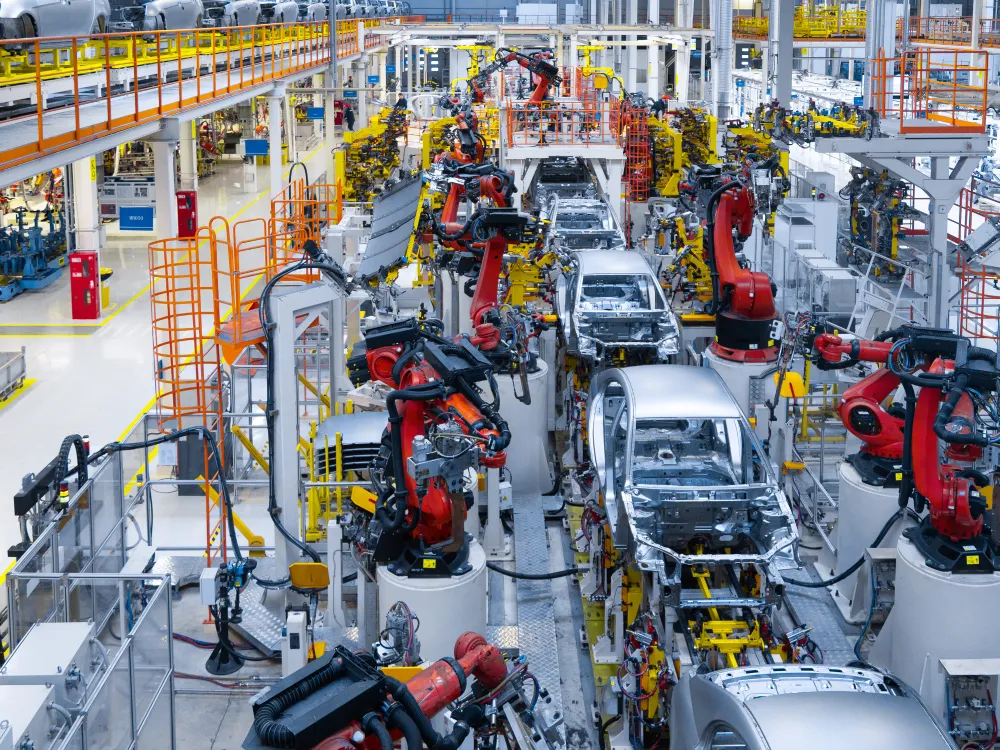
Macroeconomic Perspectives on the Automotive Industry: How Data Transparency Drives Growth
The automotive industry has been a trendsetter for economic activity, from manufacturing trends all the way to consumption trends for a long time. Such an industry today finds itself in an environment filled with never-before-existing and sometimes conflicting opportunities and threats due to the fast pace with which new technologies are introduced and developing economies change. Instead, the course of this metamorphosis may be marked by the constant need for undistorted data. Providing truthful, reliable, and reachable information that transparency in data corresponds to is the main factor for the development of the automotive sector.
In this blog post, we will look into the importance of the macroeconomic factors of data transparency and will see how open data has powered growth, created trust among customers, and, finally, has been the major factor in a competitively strong and resilient automotive market.
The Intersection of Macroeconomics and the Automotive Sector
Generally, the automotive sector is the main driver for both economic growth and stability. As a creator of jobs, manufacturing output, and technological innovations, the automotive sector is correlated with many important economic indices. The state of the economy is known for fluctuating and usually starts from the vehicle manufacturing sector, which is the reason why the auto can be seen as a kind of altimeter which allows one to discover the overall health of the economy. Despite these headwinds, transparency has been identified as a crucial factor in risk mitigation and efficiency in the sector.
The manner in which companies can disclose clear data in the operation of vehicles has several positive implications within the market formation and buying activities. The newest marketplaces, like Vininspect.com, which are represented online, have the facility to get detailed only Vehicle Identification Number (VIN) reports that guarantee the authenticity of the vehicle the buyer wants to purchase. With the transaction, this will make the car buyers more certain of the quality and the final decision will be solid. The certification of transparency translates to a brand that is strong through time disposed at the marketplace. When such ways of doing business exist, the level of trust of the vehicle dealer and the vehicle investor with available and checked information is high.
Accident History of a Car
The history of the car's accidents can have a big impact on the car's good mileage, its safety and the price it can have on the market. That is why the individuals on both ends of this particular transaction should ensure that the information is correct and reliable to avoid overinflated prices or scandals. People can make an informed purchase and avoid unnoticed danger with a discovery of maintenance history, body damage, as well as- past occurrences by means of apps like vininspect.com, which transmits a VIN report along with info about past events, airbag deployments and claims with insurance company. A car's accident record gives buyers the confidence to buy the vehicle, it helps sellers to price the car correctly, and thus, it does the highway safety promotion solidarity.
The Role of Data Transparency in the Automotive Industry
Data transparency in automobiles implies that the public has access to the car's background, their knowledge of the car's performance, their security record, and their involvement in saving the environment. It is sufficient to provide correct information to car producers, dealers, and well as third-parties, thus enabling each of those affected to make informed decisions. Transparency of information has a positive effect on inequality by reducing information asymmetry that tends to appear in the process of big transactions, which is the trusted platform and a prerequisite for long-term growth in the market.
Moreover, transparent information programs are applicable to federal and state-level governments and agencies. These programs ensure that all are participating on a level playing field. With every actor in the market being entitled to have the same information, the chances of distortions of the market by means of information inaccuracies and covering up of the defects are very low. The levelling of the competitive field has the effect of causing the emergence of innovation among companies with a strong focus on becoming more creative in goods and service offerings. Thus, the said developments attract capital expenditure, push news, and repeatedly generate employment, all those being the main components of a sound macroeconomic environment.
Economic Impact and Consumer Confidence
The level of data disclosure directly influences the level of consumer confidence, which acts as the driving force of the economy no matter the sector it operates in. Certainly, it is a fact that vehicle buyers can be confident when they access comprehensive and reliable VIN reports that allow them to see current vehicle conditions. Consumers who use these reports are able to verify the history of a car, check its condition, and even find out its market value. This type of probability that a deal would have an impact on the economy, which mostly consists of high-value transactions with the potential for uncertainty and perception of risk, is highly probable.
The increased consumer confidence leads to an increase in the sales volume as well as increases the marketplace liquidity. The investment will be secure, and thus, buyers will feel safe when transacting, and demand will then be stimulated in the automotive marketplace. Moreover, trust in the accuracy of the information is appealing to additional investors who come into the marketplace and, with them, more capital and innovation. That harmonious cycle of feedback between transparency of information and the trust of buyers will bring about macroeconomic stability in the automotive marketplace in general.
Driving Growth Through Open Data Practices
For instance, open data methodologies in the auto sector have been further facilitated and extended by applying a strategic dimension that allows for the orientation of external data in a sustainable and dynamic environment, which opens a stream of innovation. Open data transparency gives dealers and manufacturers a high level of accuracy for performance indicators and operational improvement areas. For example, by the aggregated analysis of the VIN information, companies can detect trends in durability, maintenance, and safety performance for the autos. Here are not only such data contributing to the product's quality improvement, but they can also help save companies' recall and warranty claim dollars.
Moreover, open data assists governments in the proper implementation of regulations through the correct supervision and effective policymaking. Precise and reliable car industry data can now be obtained and shared with government regulators who can then use it to implement the necessary security measures, environment controls, and consumer protection policies consistent with the real-time marketplace realities. This kind of partnership between regulators and private entities leads to a sounder and more flexible economy. In response to these regulations, car companies which keep up with these requirements end up becoming competitive at a global level. As a result, innovation, as well as long-run economic growth, is the outcome.
Policy Implications and Future Outlook
An encouragement of transparency in automotive data from a policy perspective is vital for the establishment of a competitive market and an increase in economic resilience through innovation. Policymakers are beginning to understand that not only can programs of open data serve as a protection for consumers, but they may also cause competition in the market. The development of the institution of transparency will be the result of establishing a strict policy on information disclosure by car manufacturers, and at the same time, the government will be the promoter of this transparency supporting it, while opacity will not be tolerated.
Blockchain, artificial intelligence, and IoT (Internet of Things) are the new technologies that are about to enter the market and aim to play a highly favorable role in the entire automotive industry as they will touch upon the issues of transparency of data. The introduction of novel technologies will create new avenues for the collection, analysis, and distribution of data that will be not merely rapid but also correct. The creation of such advancements will not only lead to efficient markets, reduced transactional costs, and a louder global automotive industry but will also subsequently be a large contributor to macroeconomic stability and development and thus be the major contribution of information transparency in economics in the long run.
Conclusion
Therefore, transparency of information is among the most significant drivers of growth in the automotive industry from a macro perspective. Through the reduction of asymmetry in information, the gain of confidence among consumers, and the creation of fair competition, transparency practices in the information sphere make space for long-term economic activity and innovation. With the information at hand, players can make full use of the data quality and content also an essential item since it is the one that is included in the VIN.
This information provides consumers with the majority of the information and policy coordination for them to the market's execution plan. As the automotive industry progresses, open information practice will be a mandatory component of sustainability and economic growth in the long run. Transparency does not belong to compliance procedures but it's a strategy asset that will architect a brighter and more resilient future of the automotive sector.


